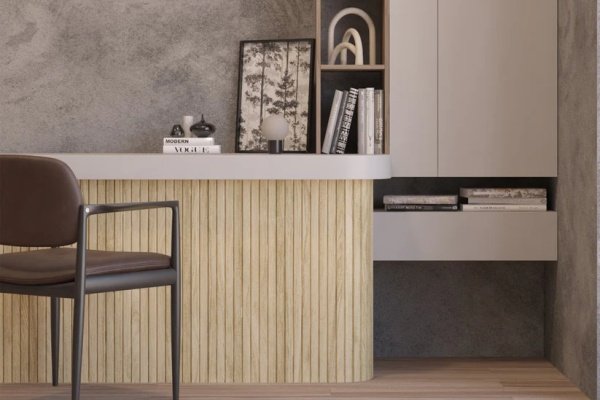If you’ve ever faced quality issues, shipping delays, or unclear materials, you know how frustrating choosing the wrong manufacturer can be.
To choose the right tambour wall panel manufacturer, B2B buyers need to consider certifications, production capabilities, and the quality of technical support. This ensures reliability, smooth logistics, and long-term partnerships.
tambour panel manufacturer selection
I’ve worked with many global buyers who underestimated the importance of verifying a manufacturer before placing their first order. They were left chasing documents, fixing miscommunications, or losing the deal entirely. In this post, I’ll break down exactly what B2B buyers should check to choose a reliable tambour wall panel partner.
What Certifications and Standards Should a Reliable Tambour Panel Manufacturer Have?
Certifications can sound like paperwork. But in real B2B projects, missing documents can stop customs, delay shipments, or create legal issues.
Reliable tambour panel manufacturers should hold ISO 9001 for quality management, FSC for responsible wood sourcing, and pass REACH testing to ensure material safety. These standards protect your project, brand, and clients.
A few years ago, I had a client from the UK who insisted on third-party lab verification. He told me, “My customer needs FSC, or I don’t get the job.” That experience reminded me how certifications aren’t just marketing — they are access tickets to high-value markets.
Let’s compare the essential certifications:
| Certification | Purpose | Why It Matters |
|---|---|---|
| ISO 9001 | Quality Management | Ensures consistent production and internal processes |
| FSC | Forest Stewardship Council | Guarantees wood comes from responsibly managed forests |
| REACH | EU Chemical Regulation | Confirms safe, non-toxic materials for European markets |
Buyers working with government or commercial projects often require these from day one. Even if you don’t need all of them now, choosing a certified manufacturer helps future-proof your supply chain. Always ask for a copy of certificates and verify them with issuing bodies if you have doubts.
How to Evaluate Production Capacity and Lead Times for Large B2B Orders?
You land a big project. You’re excited. But your supplier says they need 45 days — and you only have 30.
Before placing large orders, evaluate the tambour panel manufacturer’s production lines, monthly capacity, and historical lead time performance. This prevents surprises and helps you plan with confidence.
I had a distributor from France who needed 20,000 sqm of tambour panels within five weeks. His previous supplier couldn’t deliver. He came to us, panicking. Luckily, with five production lines and a stable supply of raw materials, we managed to deliver ahead of schedule — and he became a long-term partner.
To evaluate a supplier’s production capability, ask:
Key Evaluation Criteria
- Number of Production Lines
More lines mean higher output and lower risk of backlog. - Average Monthly Output
Look for documented figures — not just verbal promises. - Historical Lead Times
Ask for examples of recent orders and how fast they were completed. - Order Flexibility
Can they adjust for rush orders or phased deliveries? - Buffer Stock Availability
Some suppliers keep stock of popular finishes — this helps during peak seasons.
When sourcing from China or Vietnam, shipping time is another variable. So build in shipping time when planning your order timeline. I always advise buyers to give at least 7–10 days buffer — especially for port or customs delays.
Why Technical Support and Material Transparency Matter in Supplier Selection?
You place the order. The panels arrive. But your installer says the backing cracks during installation — and you don’t even know what it’s made of.
A good tambour panel supplier offers clear material disclosures and technical support before and after sales. This prevents installation failures and builds trust with your clients.
I remember one client from Australia who asked, “What’s the fire rating of the MDF core?” At the time, many suppliers avoided the question. But we gave him a detailed sheet showing the MDF composition, the adhesive type, and PET felt density. He was impressed — and gave us the project.
Transparency helps you avoid project risk. Here’s what to request:
Essential Material & Support Details
| Requirement | What to Ask |
|---|---|
| Material Composition | Request detailed datasheets, including core material, veneer type, and backing |
| Fire Rating and Testing | Ask for EN 13501 or ASTM results, depending on market |
| Installation Guide | A clear, visual guide helps your team install panels without trial and error |
| Technical Contact | Know who to call when your team has questions onsite |
Suppliers who hide material details may be using low-quality substitutes. In B2B projects, that’s a dealbreaker. Always work with partners who can explain their materials and support your team from quotation to installation.
Conclusion
Choosing the right tambour panel manufacturer means verifying certifications, checking production strength, and confirming technical transparency — all key to securing reliable supply and smooth projects.

